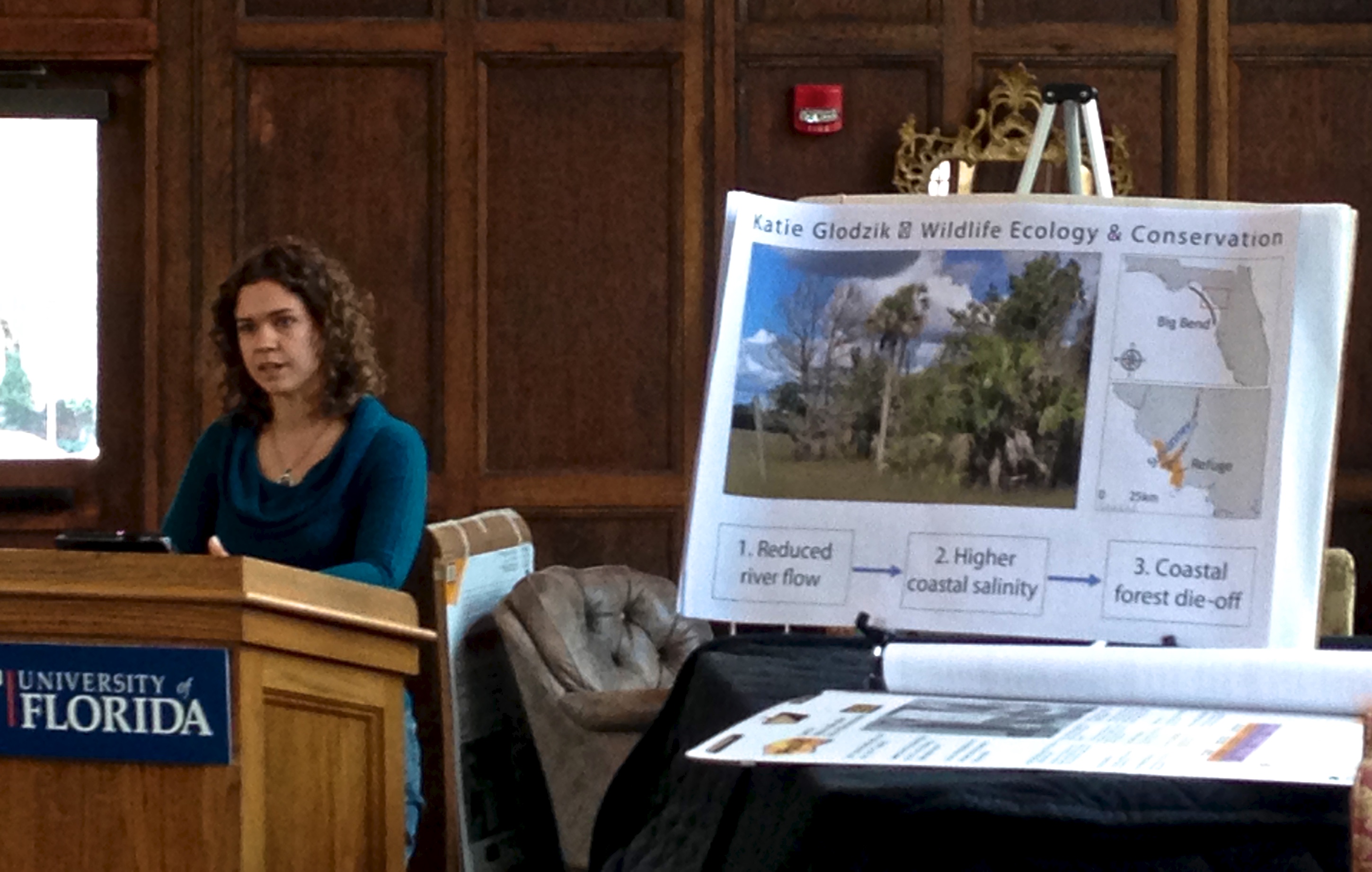
In The Spotlight
Students in the Spotlight<--Back

WIGF Research Gathering ,
Last week, students and faculty members of the innovative Water Institute Graduate Fellows (WIGF) program met to share their research and insights about their experiences and welcome the faculty from the recently awarded 2015 Amazon Dams WIGF cohort.
After a brief overview and introduction by WI Research Coordinator Lisette Staal and WI Director Dr. Wendy Graham, they turned over the mic to Dr. David Kaplan, who is leading the 2015 Amazon Dams WIGF. This faculty cohort is made up of 6 diverse faculty members, in fields ranging from Environmental Engineering and Forestry to Geography and Latin American Studies. The Amazon River is the world’s largest watershed and the ~600 planned dams on the river raise questions about the future of the Amazon. Kaplan presented a few examples of interdisciplinary research questions that the group is interested in tackling. For more information about the 2015 WIGF group and to apply, click here.
One student representative from each of the 2011 and 2013 cohorts briefly shared highlights of their group’s interdisciplinary activities. Elliott Arnold, a Geological Sciences student representing the 2011 cohort, explained that their group is focused on developing new knowledge, and engineering, management and policy solutions needed to establish and achieve numeric nutrient criteria for Florida’s waters. In addition to their research projects, Elliot explained that the 2011 student cohort had developed a, undergraduate honors course called Interdisciplinary Issues in Water Science. The course has been successful and they have now taught it for 2 semesters, and they plan to teach it again in Fall 2015. In addition to teaching together, Arnold said the students frequently help each other with fieldwork. While the students are not working on joint research projects, he said they understand how each of their individual topics fit into the overall theme of their cohort.
Next, Andrea Pain presented the interdisciplinary highlights of the 2013 cohort, which is focused on sea level rise (SLR). Students in this cohort come from diverse backgrounds but have spent a lot of time in the field and classroom together. They held bi-weekly meetings during the first year of the fellowship and went on two trips to work with researchers in Mexico to study SLR on the Yucatan Peninsula. Pain said the students have different but overlapping research questions and are tackling sea level rise from a plethora of different points of view and varying time scales.
To highlight the current students’ research, each student prepared a poster and 2-minute “elevator speech” summarizing their research topic and status to share with the group. This “round the room research” gave everyone a taste of what their peers are up to. To learn more about each presenter, click on the year: 2011 / 2013.

After the student presentations, faculty and students in attendance discussed how to integrate and create synergies among all of the WIGF cohorts. One of the underlying goals of the WIGF program is to create lasting connections between faculty even after the students graduate – this integration and collaboration among faculty, not only within but between cohorts, will be valuable for future interdisciplinary work at the University.
By Jenny Adler
